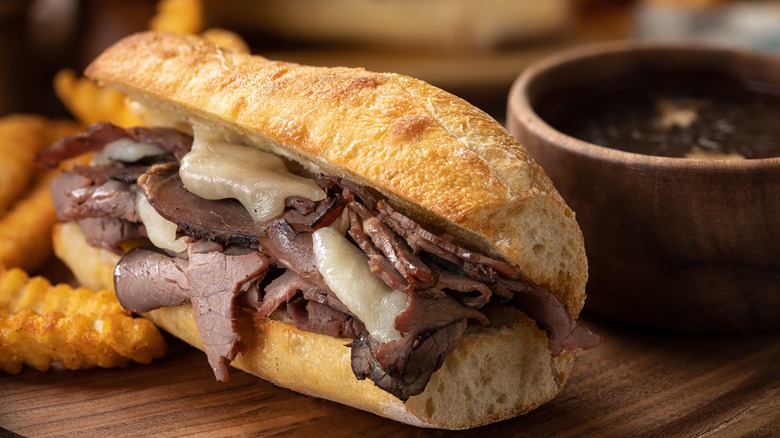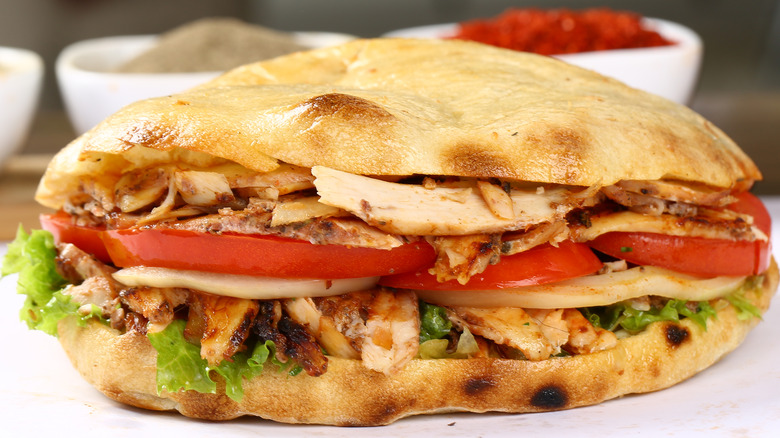Why Warm Ingredients Make Your Sandwich Soggy
As much as we all love a fancy, restaurant-quality dish such as crispy roast duck, red wine-braised short ribs, or beef wellington, there's one food that's way easier to make — requiring almost no culinary skills at all — that always seems to satisfy, whether it's night, day, or some hazy time in between: The humble sandwich. Consisting of all manner of ingredients layered between bread, sandwiches are one of the first foods many of us learn to make at home unassisted, and they remain a delicious go-to in adult life when responsibilities and to-dos seem to pile up faster and faster with each passing day.
Like other widely appealing dishes such as pasta and pizza, one of the qualities that endear the sandwich to so many hearts is its versatility (via Lacademie). Your favored combination might consist of tuna salad on wheat, chicken parm on a roll, ham and cheese on rye, or roasted veggies on focaccia — or one of the hundreds of other variations of meats, fish, cheeses, vegetables, and condiments layered between dozens of other kinds of bread. And though the art of sandwich making is a pretty simple and straightforward one, there's one common problem that can really affect a sando, and that's the bread going limp and soggy from the moist ingredients inside. One way to avoid the issue and keep your sandwich nice and fresh? Letting any warm ingredients cool down before assembling your creation.
Warm sandwich ingredients can steam into bread and make it soggy
Most of us have been making sandwiches since we were kids, and though our sandwich skills have likely improved since the days of a white bread-mayo swipe-ham sammy, there's one issue lots of us have likely been struggling with for years: Keeping a sandwich from going soggy, especially once it's been bagged and tossed into our lunchbox or picnic cooler. According to Kitchn, sandwiches are at high risk of going soggy, since they pair an ingredient you want to keep dry and even crisp — bread — with moist ones such as mustard and other condiments, sliced fresh vegetables, and wet fillings such as egg and tuna salads that are just fixin' to soak into the bread and leave it sodden.
One category of sandwich fillings that really threatens to soak our crunchy baguettes and chewy sourdoughs is warm ones, which the outlet explains give off steam while they're still hot. Think roasted vegetables, boiled eggs, caramelized onions, and the like: If layered onto a sandwich just after they're cooked, Kitchn notes, their condensation will go right into the bread and sog it down. Therefore, the site recommends letting any warm sandwich ingredients cool to room temperature before stuffing them into your favorite 'wich. Another tack you can take to fortify your bread against invading moisture? Slather it with fatty condiments such as softened butter, mayonnaise, or pesto, which all help repel water and keep your sandwich bread fresh.

